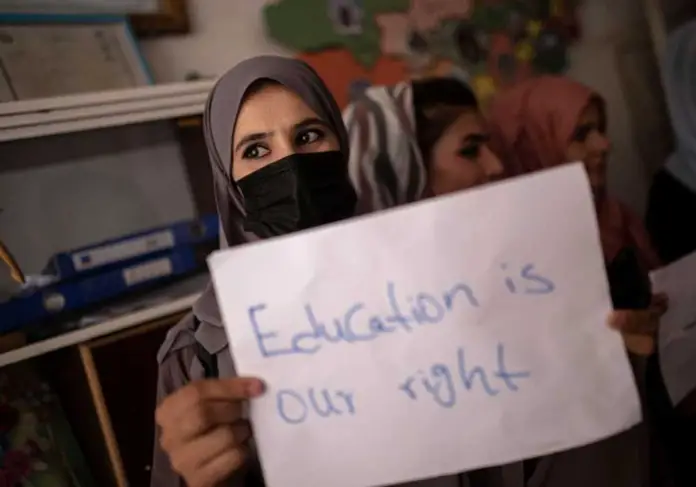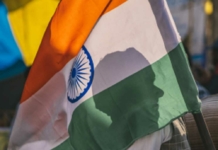As goes with Pakistan-born Nobel Prize laureate Malala Yousufzai’s words that every girl, no matter where she lives, no matter what her circumstances, has a right to learn. Consequently, every leader, no matter who he or she is or if the resources are available to him or her, has a duty to fulfil and protect this right. Could not agree with her more!
Women represent half of the world’s population and, therefore, also half of its potential. Empowering women and promoting gender equality is crucial to accelerating peace and sustainable development. Empowering women spurs productivity and economic growth. Women hold the greatest potential for change in their communities.
Yet, women are disproportionately affected by violence and prejudices that limit their opportunities and prevent them from lifting themselves, their families and their communities out of poverty. Ending all forms of discrimination against women is not only a basic human right, but it also has a multiplier effect across all other development areas. And yet many global development plans do not include or consider women at all, and their issues become ignored.
If effectively supported during their adolescent years, girls have the potential to change the world, both as the empowered girls of today and as tomorrow’s workers, mothers, entrepreneurs, mentors, household heads, and political leaders. An investment in the power of adolescent girls upholds their rights today and promises a more equitable and prosperous future, one in which half of humanity is an equal partner in solving the problems of climate change, political conflict, economic growth, disease prevention, and global sustainability.
Hence, it is our collective responsibility to support, advocate and decide to help women. There are plenty of community-based initiatives working to solve these issues and more for girls. Women have pressed this agenda forward, leading global movements on issues ranging from sexual and reproductive health rights to equal pay. But 25 years later, discrimination and limiting stereotypes remain rampant.
According to figures released by the United Nations Population Fund, as many as 12 million girls are married before age 18 each year. One in five girls globally has experienced sexual violence. And more than 130 million girls are not in school. In Pakistan, while millions of girls aren’t able to go to school, millions more are fighting to stay there. As a girl grows older, getting an education becomes even harder. Her family must be able to afford and be willing to pay school fees.
The United Nations Children’s Fund says that girls aged five to 14 spend 40 percent more time on household chores, collecting water and firewood than boys of the same age. Instead of attending class, girls and women around the world spend 200 million hours each day, which is a colossal waste of their valuable time. These 200 million hours are 8.3 million days or over 22,800 years. This simple act is preventing them from living a life of basic meaning and worth. The benefits of education for girls are significant. Compared to girls with no education, girls with education are: less likely to marry, contract HIV/AIDS, and become pregnant as adolescents.
Also, these educated girls can contribute to the country’s economic growth and overall development; if they become educated mothers, they are more likely to immunize their children and invest in their education; girl’s education helps reduce population growth with a focus on sustainability; they are less likely to be in forced child marriages.
Over 60 percent of child brides in developing countries have no formal education. Education is a universal human right, but global data show that girls have less access to education than boys. Almost two-thirds of the world’s illiterate population are female, a statistic that reflects the depth of inequality in education. Some 55 per cent of out-of-school children of primary school age are girls. Bitter daydreams of a daughter, Ayesha (aged 15) accompanying her mother who earns her living cleaning houses in my neighborhood.
Ayesha’s two younger brothers stay behind at home. “It’s easier to be a boy,” says Ayesha, who was forced to drop out of school at 10. “They get to go to school.” Ayesha’s mother said she could not afford to let all three of her children study, so she picked her daughter to drop out. “I regret she has this hard life,” her mother, Shahida (age 35) says. “But this is the destiny of girls. It was my destiny too.” Unlike her mother, who never set foot in a classroom, Ayesha did study on and off for a few years, thanks to major government initiatives over the past few years to enroll all children. Ayesha can barely read or write though. “My brothers, they will study. They can hope for different things,” she says. “What can I be?” In a personal capacity, I thought to myself as to what could I do to make a positive difference. What I did was collect donations and had Ayesha enrolled in a nearby public school. We, the donors, got taken in by her innocent plea that “All I need is a chance! Girls have the right to expect more. Give girls a chance. Everyone can make a beautiful change. Will you?






